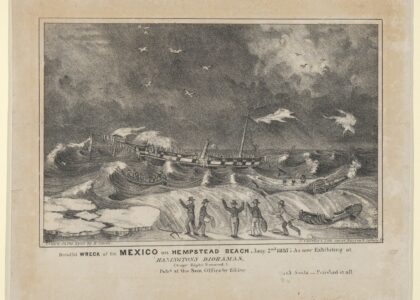As you find yourself at these coordinates, you’re standing near the final resting place of the RMS Lusitania, a ship whose tragic end shifted the tides of history. The Lusitania was more than just a passenger liner; it was a symbol of luxury and speed, a testament to early 20th-century maritime engineering. Launched in 1906 by the Cunard Line, the Lusitania was built to dominate the transatlantic passenger trade, ferrying people across the ocean in style and record time.
When World War I erupted, the seas became perilous. Despite the dangers, on May 1, 1915, the Lusitania set sail from New York City, bound for Liverpool. Onboard were 1,959 souls, including a mix of vacationers, business travelers, and emigrants. Among them were notable figures such as theater producer Charles Frohman and writer Elbert Hubbard. Little did they know, this voyage would be their last.
As the Lusitania approached the coast of Ireland, the threat of German U-boats loomed large. Despite warnings, Captain William Thomas Turner opted not to zigzag, a maneuver that could have evaded enemy torpedoes. On May 7, 1915, a German U-boat fired a torpedo that struck the ship. A mysterious second explosion followed, sealing the ship’s fate as it sank in a mere 20 minutes.
The sinking resulted in the loss of 1,198 lives, including 128 Americans. This tragic event sent shockwaves across the globe and stirred a wave of indignation in the United States. Though the U.S. maintained its neutrality for two more years, the event contributed to its eventual entry into World War I, altering the course of the conflict.
The Lusitania’s story is more than a tale of maritime tragedy; it is a pivotal chapter in world history. Its sinking highlighted the perils of warfare and the indiscriminate nature of modern conflict. Today, the Lusitania rests beneath the waves south of the Old Head of Kinsale, its legacy a poignant reminder of the past.
As you reflect on this site, imagine the grandeur of the Lusitania in its prime, the excitement of passengers as they embarked on transatlantic adventures, and the somber silence that now envelops its watery grave. The Lusitania’s legacy lives on, not just in history books, but as a symbol of the delicate balance between innovation and vulnerability.




